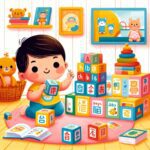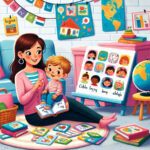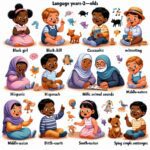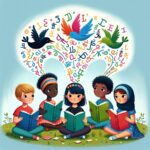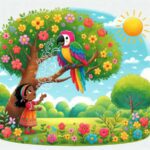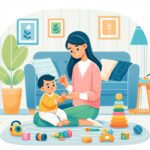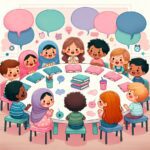Strategies for bilingual language development from birth are crucial for parents and caregivers who envision raising linguistically versatile children. In today’s globalized society, being bilingual or even multilingual can offer significant advantages, ranging from cognitive benefits to career opportunities later in life. This article dives deep into the methods and practices that can be initiated from birth to foster a bilingual environment for the newest member of your family.
Understanding the Foundations of Bilingual Language Development
Language learning is an innate ability that babies are born with. From the moment they enter the world, infants are equipped with the mechanisms to distinguish and learn any language. Research suggests that the first few years of a child’s life are critical for language acquisition. During this period, the brain’s plasticity allows it to absorb languages more efficiently, making it the perfect time to introduce a second language.
One key aspect of laying a strong foundation for bilingual language development is consistent exposure. Children need to hear both languages regularly and in a variety of contexts to become proficient bilingual speakers. This can be achieved through conversation, storytelling, and interactive play, ensuring that both languages are a natural part of their everyday environment.
Strategies for Bilingual Language Development From Birth
Implementing strategies for bilingual language development from birth doesn’t have to be daunting. One effective approach is the ‘one parent, one language’ strategy, where each parent consistently speaks a different language to the child. This method provides clear linguistic boundaries and helps the child associate each language with a specific person.
Additionally, incorporating bilingual resources such as books, music, and educational toys can enrich the language learning experience. Engaging with multimedia content in both languages, like children’s shows or apps designed for language learning, also supports language development by providing diverse contexts for language use.
Creating a Bilingual Environment at Home
A bilingual home environment is vital for reinforcing the languages being learned. This can be cultivated by establishing routines in both languages. For example, morning routines can be conducted in one language, while evening routines are in another. Such practices help children associate specific parts of their day with a particular language.
Regularly interacting with native speakers or arranging playdates with children who speak the second language can also provide practical, real-life contexts for language use. This not only aids in language acquisition but also in cultural understanding. Additionally, celebrating cultural traditions and holidays related to both languages can further enhance a child’s connection to and appreciation of the languages they are learning.
Challenges and Solutions in Bilingual Language Development
Raising bilingual children can come with its set of challenges, such as language mixing or a preference for one language over another. It’s important to address these challenges with patience and consistency. Encouraging the use of both languages equally and providing ample opportunities for practice can help mitigate these issues.
Furthermore, seeking community support and resources can be incredibly beneficial. Many communities offer language playgroups, bilingual educational programs, or language classes that can support your child’s bilingual journey. Online resources and forums can also offer advice and share strategies from other parents raising bilingual children.
In conclusion, strategies for bilingual language development from birth are centered around exposure, consistency, and active engagement. By creating a supportive bilingual environment, parents can lay a strong linguistic foundation for their child’s future. It’s a journey filled with challenges, but with the right approach and resources, it can lead to a rewarding outcome for both the child and the family.
For more information on bilingual language development and other related topics, visit our extensive library of resources at Strategies for Bilingual Language Development From Birth.


